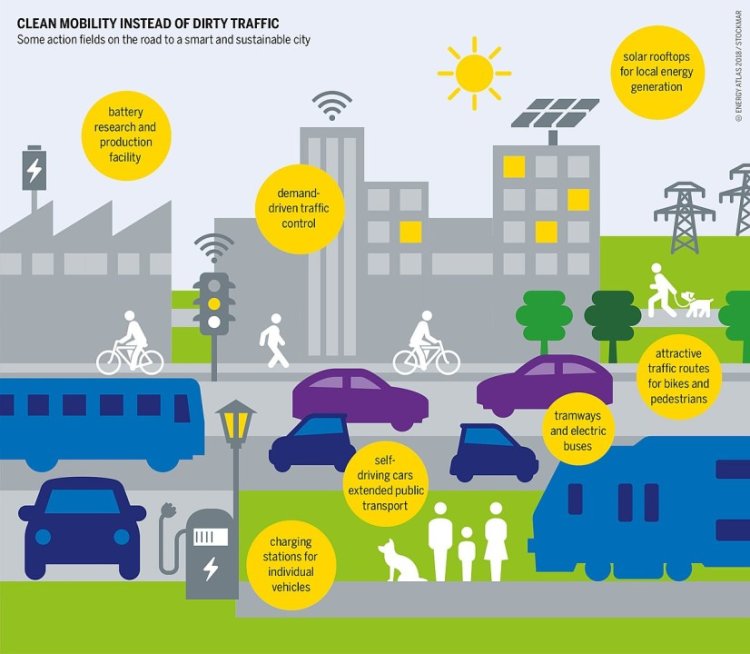Paving the Way Forward: Sustainable Solutions for Urban Mobility

In an era defined by rapid urbanization and environmental consciousness, the future of transportation is undergoing a profound transformation. As cities grapple with congestion, pollution, and the pressing need to reduce carbon emissions, the demand for sustainable solutions for urban mobility has never been greater.
In this blog post, we'll explore the innovative technologies and initiatives shaping the future of transportation and discuss how they contribute to building more sustainable and efficient urban ecosystems.
The Difficulties of Urban Transportation
The increased demand for transportation services brought about by urbanization has resulted in air pollution, traffic jams, and wasteful resource use. Conventional transportation methods, like personal vehicles and buses that run on fossil fuels, greatly increase greenhouse gas emissions and worsen environmental damage. In addition, the utilization of single-occupancy vehicles worsens traffic and lowers the general effectiveness of urban transportation networks.
Accepting Sustainable Solutions
Thankfully, revolutionary shifts in urban mobility are being made possible by technological improvements and the increased focus on sustainability. Smart infrastructure, shared mobility services, and electric vehicles (EVs) are just a few of the creative ways that cities throughout the world are promoting sustainable transportation.
Let's examine a few of the major projects propelling this change:
- Electric Vehicles (EVs): One of the main tenets of sustainable transportation is the transition towards electrification. Compared to conventional combustion engine vehicles, electric cars, buses, and bikes are cleaner options that improve urban air quality by drastically lowering emissions. For urban commuters, electric vehicles (EVs) are becoming more accessible and useful due to advancements in battery technology and the growing infrastructure for charging them.
- Micro-Mobility and Public Transportation: Investing in efficient micro-mobility programs like electric scooters and bike sharing promotes modal shifts away from single-occupancy cars. Congestion and carbon emissions are decreased when commuters choose convenient and environmentally friendly alternatives to driving through integrated transportation networks that seamlessly connect various modes of transit.
- Smart Infrastructure and Mobility Solutions: Cities can maximize the sustainability and efficiency of their transportation systems by utilizing technology. Authorities can more effectively control traffic flow, lessen congestion, and optimize routes with the use of real-time data collection, predictive analytics, and smart traffic management systems. Furthermore, programs like ride-sharing services and carpooling encourage resource sharing and lower the number of automobiles on the road.
- Urban Planning and Design: Creating walkable, bike-friendly communities with a mix of land uses encourages environmentally friendly travel practices. Compact, mixed-use communities promote active transportation options like walking and cycling and lessen the need for lengthy commutes. Moreover, giving priority to green areas and pedestrian-friendly streets improves how livable urban areas are overall.
CONCLUSION
Sustainable transportation solutions that put inclusivity, efficiency, and environmental stewardship first will be key to the industry's future. Cities can create more resilient and livable urban environments by embracing electric vehicles, investing in public transportation infrastructure, utilizing smart technologies, and implementing deliberate urban planning strategies. Sustainable transportation will be essential in creating the accessible, effective, and ecologically conscious cities of the future as we manage the challenges posed by urbanization and climate change.
What's Your Reaction?


















